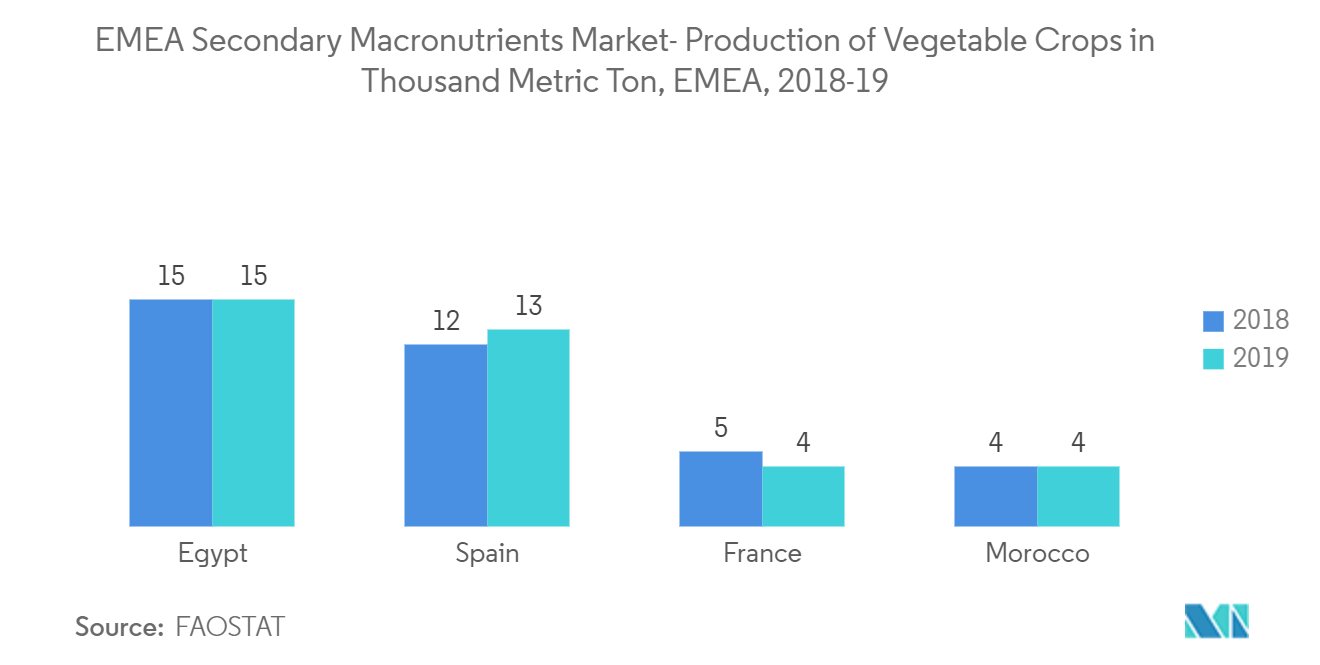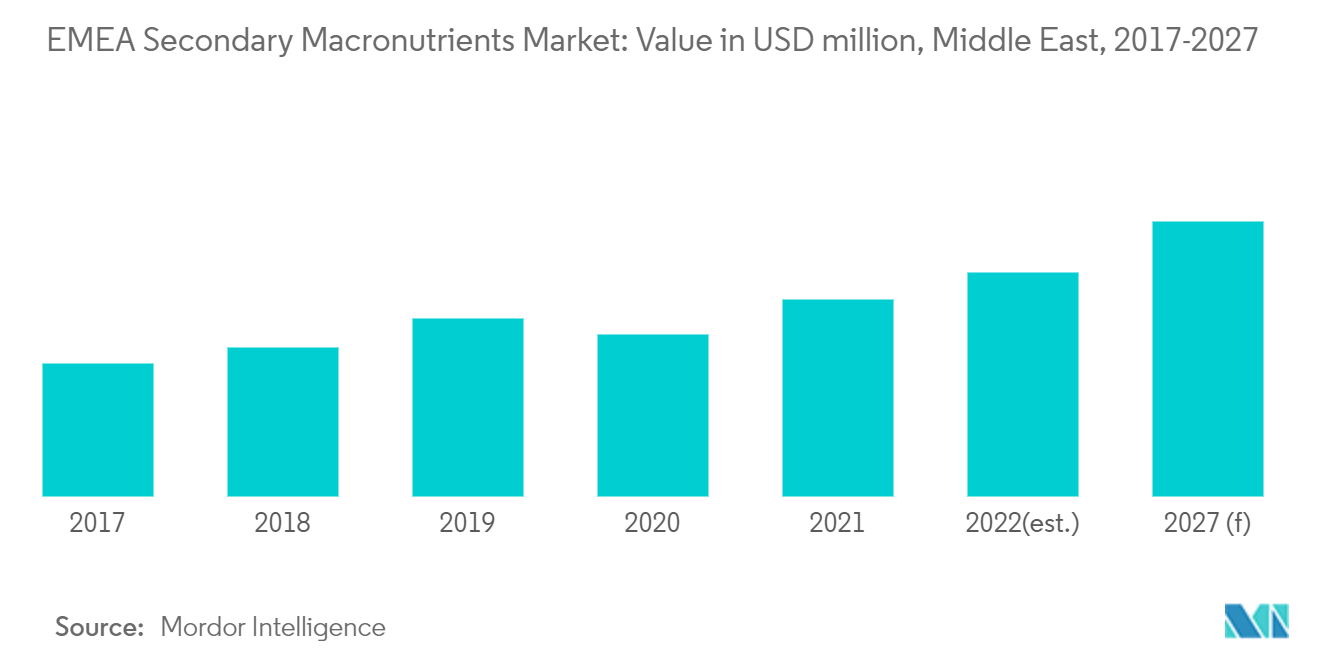Market Trends of EMEA Secondary Macronutrients Industry
This section covers the major market trends shaping the EMEA Secondary Macronutrients Market according to our research experts:
Secondary Macronutrients Ensure Healthy Plant Growth
In recent years, due to rigorous farming practices using primary macronutrients, the plants have suffered from secondary micronutrient deficiencies in Europe. Although required in small quantities, secondary macronutrients are highly effective in ensuring the healthy growth of plants. The presence of calcium in plants helps to provide the necessary structural support for the plant cell. Likewise, magnesium is required for photosynthesis as it stimulates the enzymes required for plant growth. Lastly, sulfur is also necessary for moderate quantities, and it helps plants to develop chlorophyll and protein synthesis.
Though required in small quantities, secondary macronutrients are highly effective in ensuring the healthy growth of plants. The presence of calcium in plants helps to provide the necessary structural support for the plant cell. Likewise, magnesium is required for photosynthesis as it stimulates the enzymes required for plant growth.
The demand for increasing agricultural yield to meet the requirements of the growing population further boosts the growth of the secondary macronutrient market in EMEA countries. In the agriculture industry, magnesium salt is included as a fertilizer in the soil to correct its magnesium deficiency. Farmers who produce cash crops and vegetables severely depend on the magnesium-rich earth to create appropriate crop growth conditions. The salt also has high demand from plant nurseries for the efficient development of potted plants. The EMEA countries' population growth coupled with rising disposable income in developing economies has resulted in dietary changes, hence acting as an EMEA secondary macronutrient market driver.

Middle East to Register Fastest Growth
According to the UAE Ministry of Environment and Water (MOEW) and Environmental Agency - Abu Dhabi, the soil of the country is considered one of the most challenging soils in the world. Further, land degradation in the region is increasing salinization, sand violation, waterlogging, and loss of productive topsoil, which, in turn, is encouraging the use of fertilizers that are rich in secondary macronutrients. The manufacturers are offering secondary fertilizers that provide flexible options for application, including pre-plant, starter, side-dress, or fertigation. These are generally compatible with pesticides. Therefore, this factor is driving the demand for secondary macronutrient fertilizers among the farmers in the EMEA region for better yield.
In 2019, Saudi Basic Industries Corporation (SABIC) developed a new product called urea calcium sulfate (UCS), which is the first of a kind fertilizer product that uses the by-product calcium sulfate. UCS is a stable fertilizer that delivers nitrogen along with secondary macronutrients, calcium, and sulfur to the crops. The commercial trial of this product was successfully conducted by the company at the Ibn Al-Baytar plant in 2019. Thus, with the increased demand for secondary nutrients because of the increasing crop cultivation, the use of secondary macronutrients are anticipated to increase in the coming years.


